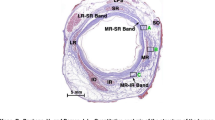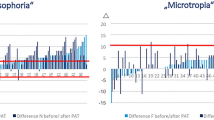Summary
The conceptions of primary and secondary amblyopia are defined. Primary amblyopia is one of the many causes of squint; secondary amblyopia is a result of squint.
A combination of primary and secondary amblyopia is possible. The factors influencing the development of squint are: a. mechanical, b. physiological, c. pathological, d. errors of refraction, e. psychological. Competition between all these factors decides, whether a squint will develop or not. Diplopiaphobia strives to bring the eyes into such a position that double images do not occur either into a position of fusion, or into a position of strabismus concomitans with exclusion of one image.
The fusion tendency strives to obtain the correct position.
The conflict “to squint or not to squint” is fought out between the strength of the fusion tendency and the muscular effort necessary to abtain the correct position. In the production of orthophoria and heterophoria the diplopiaphobia and the fusion tendency cooperate; in the production of strabismus concomitans they are mutually opposed. Many cases of amblyopia ex anopsia are curable or at least susceptible of improvement. The improvement is easier the younger the subject.
Résumé
L'auteur définit les notions d'amblyopie primaire et secondaire.
L'amblyopie primaire est l'une des nombreuses causes du strabisme; l'amblyopie secondaire en est une conséquence. Leur combinaison est possible.
Les facteurs qui influencent le développement du strabisme sont a. mécaniques, b. physiologiques, c. pathologiques, d. les vices de réfraction, e. psychologiques. Le concours de ces différents facteurs provoque ou non le développement du strabisme. La “phobie de la diplopie” tend à amener les yeux soit en position de fusion, soit en position de strabisme concomitant avec suppression d'une image.
La tendance à la fusion tend à établir la position correcte.
Le conflit “loucher ou ne pas loucher” se livre entre la force de la tendance à la fusion et l'effort musculaire nécessaire pour obtenir la position correcte. Dans l'orthophorie la phobie de la diplopie et la tendance à la fusion coopèrent; dans le strabisme concomitant, elles s'opposent mutuellement. De nombreux cas d'amblyopie ex-anopsia sont curables ou au moins susceptibles d'amélioration. Celle-ci est d'autant plus facile que le sujet est plus jeune.
Riassunto
L'autore definisce l'ambliopia primaria e secondaria.
L'ambliopia primaria é une délie numerose cause dello strabismo; l'ambliopia secondaria ne é una conseguenza. La loro combinazione é possibile.
Lo sviluppo dello strabismo viene influenzato dai fattori seguenti: a. mecanici, b. fisiologici, c. patologici, d. ottici, e. psicologici. Tutti questi differenti fattori provocano lo sviluppo dello strabismo. La “fobia della diplopia” agisce in modo da provocare sia la fusione degli occhi od il strabismo concomitante con esclusione di una imagine.
L'inclinazione alla fusione tende a stabilire la posizione corretta.
Il conflitto tra lo “strabismo e la posizione corretta” incomincia con la tendenza alla fusione e lo sforzo muscolare necessario per ottenere la posizione corretta.
Nell' “ortoforia” la fobia della diplopia e la tendenza alla fusione cooperano insieme, mentre sono in mutuale opposizione nello strabismo concomitante.
Numerosi casi di ambliopia ex-anopsia sono curabili o per lo meno sucettibili di ameliorazione. Questa é tanto piu facile quando il soggetto é giovane.
Zusammenfassung
Der Verfasser definiert die Primär- und Sekundäramblyopie. Primäramblyopie ist eine der zahlreichen Ursachen des Schielens; Sekundäramblyopie ist eine Konsequenz.
Die die Entwicklung des Schielens beeinflussenden Faktoren sind: a. mechanisch, b. physiologisch, c. pathologisch, d. optisch, e. psychologisch. Die Mitwirkung all dieser Faktoren veranlasst oder nicht das Erscheinen eines Schielens. Die “Diplopiaphobia” wirkt so, dass beide Augen entweder fusionnieren oder schielen, wobei ein Bild ausgeschlossen wird.
Die Fusionstendenz versucht die Parallelstellung zu erreichen. Der Konflikt “Schielen oder nicht Schielen” tritt ein zwischen der Fusionstendenz und der Muskelanstrengung die zur Beibehaltung der korrekten Stellung notwendig ist.
Diplopiaphobia und Fusionstendenz wirken beide bei Orthophorie zusammen; sie wirken gegeneinander im Begleitschielen. Zahlreiche Amblyopiefälle sind zu heilen oder mindestens zu verbessern. Je jünger der Patient, desto leichter ist die Verbesserung.
Similar content being viewed by others
References
ABRAHAM, S. V. (1934) Amblyopia: A classification. Arch. Ophthal. 12, 392–402.
CORDS, R. (1930) Die Pathologie der Augenbewegungen. Kurz. Hand. Ophthal. 3, 491–651. Berlin: Springer.
HARMS, H. (1938) Die Bedeutung der richtigen Schielbehandlung für die Volksgesundheit. Dtsch. med. Wschr. 1, 405–409.
HARTMANN, K. (1942) Wie kann sich das Sehvermögen bei Schielamblyopie nach Verlust des sehenden Auges verbessern? Klin. Mbl. Augenheilk. 108, 628.
HEINE, L. (1905) Über das zentrale Skotom bei der kongenitalen Amblyopie. Klin. Mbl. Augenheilk. 43 (1), 10–40.
HESSE, R. (1932) Augenbewegungen und Schielen. Graefes Arch. Ophthal. 128, 145–178.
JAENSCH, P. A. (1938) Das Schielen und seine Behandlung. Klin. Mbl. Augenheilk., Beiheft 4, 1–45.
— (1942a) Wie weit kann sich das Sehvermögen bei Schielamblyopie nach Verlust des sehenden Auges verbessern? Klin. Mbl. Augenheilk. 108, 102.
— (1942b) Operationen an den Augenmuskeln. Ophthalmologische Operationslehre (Thiel) 1, 119–188. Leipzig: Thieme.
JAVAL, E. (1896) Manuel théorique et practique du strabisme. Paris: Massen.
LAGLEYZE, P. (1913) Du strabisme. Paris (quoted by ords).
nORDLöW, W. (1942) Über den Entstehungsmechanismus des Einwärtsschielens. Acta Ophthal., Suppl. 20.
ONFRAY, R. (1939) Les strabismes. Traité Ophthal. 7, 31–136. Paris: Massen.
SATTLER, C. H. (1927) Erfahrungen über die Beseitigung der Amblyopie und die Wiederherstellung des binokularen Sehaktes bei Schielenden. Z. Augenheilk. 63, 19–37.
SMITH, P. (1899) On the treatment of squint in young children. IX Concil. Ophth. Utrecht, 11–21.
WORTH, Cl. (1903) Squint, its causes, pathology and treatment. London: Bâle and Danielson.
Author information
Authors and Affiliations
Rights and permissions
About this article
Cite this article
van der Hoeve, J. Amblyopia and squint. Doc Ophthalmol 7, 392–421 (1954). https://doi.org/10.1007/BF00238144
Issue Date:
DOI: https://doi.org/10.1007/BF00238144




